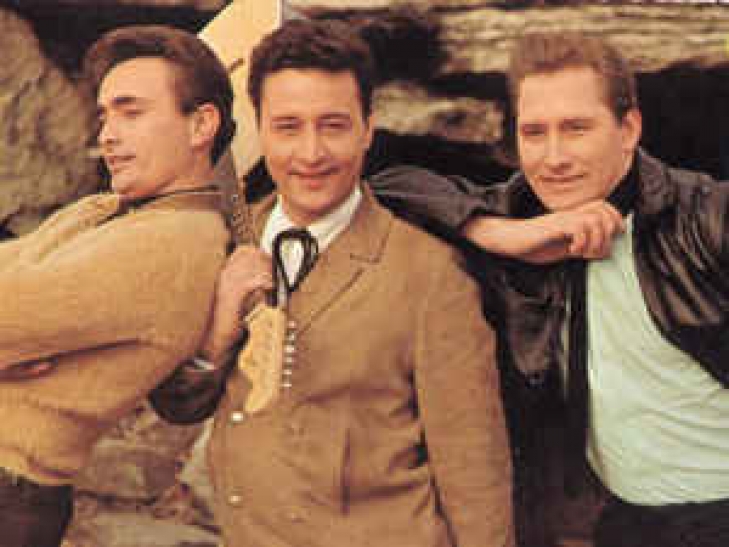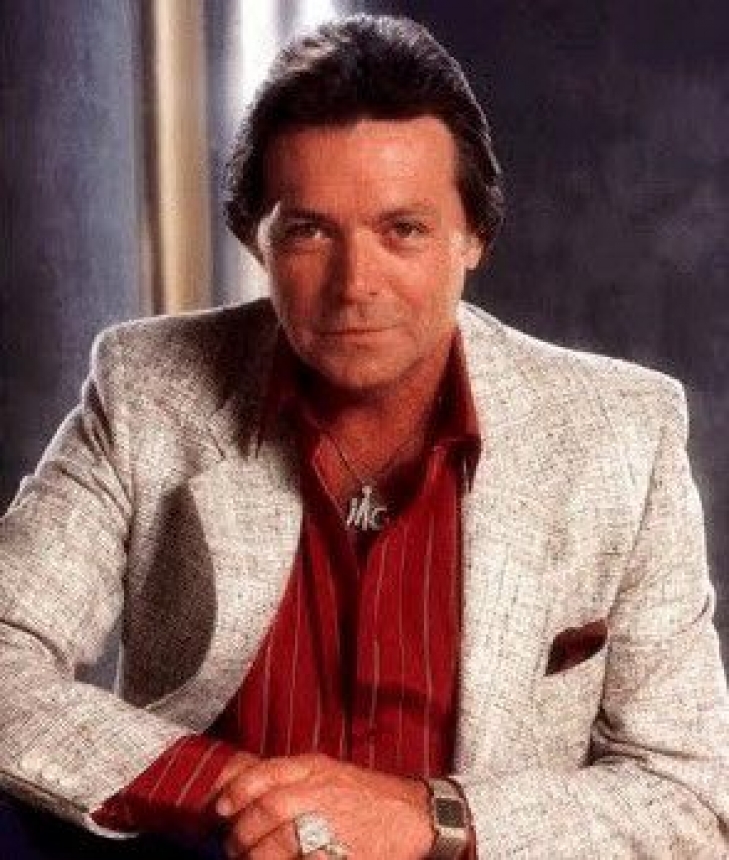
Committee Chairman
25. Tompall Glaser & The Glaser Brothers
Being the 3 youngest of six children, Tompall, Jim and Chuck Glaser began singing together and were playing county fairs when they were just preteens. From a modern perspective, their radio career was never one that set the charts on fire, but they were always firmly planted in the ‘outlaw scene’ of the 1970’s country music industry. Their harmonies were considered some of the best in the genre, so when they were starting out they got most of their work as background singers, singing on records for Marty Robbins and Johnny Cash among other people. Always knowing that they wanted to do their own thing outside of the Nashville machine, the brothers formed a publishing company in 1962. They were signing on songwriters that other studios were ignoring, including John Hartford (Hartford would go on to write “Gentle On My Mind”, a signature song for Glen Campbell and one that has been recorded by over 300 other artists). Then, after charting a few of their own songs in the late 1960’s, the Glaser brothers opened their own full studio. It housed a publishing company, a production company, a talent agency and design services for album covers. This place was a haven for artists as it allowed them to have more creative control over their music and their music careers. Artists like Mel Tillis, Jimmy Buffett and Kenny Rogers all recorded there. When Chuck had a stroke in 1975, Tompall and Jim went off for solo careers for a few years before the trio came back together in 1980. To summarize, Tompall Glaser & the Glaser Brothers never got a number one song (though they got a couple top tens), but what they were able to do was open up avenues in country music for other artists to flourish. For that, they are deserving
17. John Denver
Now John Denver is an interesting case. Starting out his musical journey in the folk-pop realm (similar to a group like Peter, Paul & Mary), he joined the Mitchell Trio in 1965 and then went solo four years later. During these first few solo years, he was recording folk songs that were becoming massive pop hits like “Take Me Home, Country Roads” and “Rocky Mountain High”. Those songs were lighting up the pop charts and selling millions, but they were doing nothing in the country realm. It would not be until years later (after Denver’s success in country music) that a song like “Take Me Home, Country Roads” would go on to be considered a classic of the country music genre. Then, by 1974, the Nashville industry seemed to think that John’s music suited the genre now and he began to get hits on the country charts. But not only had he been opened up to hits on the country charts, but he was also welcomed into the entire country scene receiving ACM awards and CMA awards (including the CMAs giving him ‘Entertainer Of The Year’). There was, of course, backlash among some in the genre that there would be a pop star getting country hits (look up the John Denver/Charlie Rich CMA issue), but as years have passed he is very much seen as a country-pop singer now. Then, after all of this, John’s success on all charts was fading by the end of the 1970’s. He got a couple more hits in the 80’s, but that would be it for chart-toppers. Nowadays, as his name has been brought up in consideration for induction, that John would be honoured but not 100% satisfied being added to the Hall Of Fame because he considered himself more of a folk artist than a country one. That is a fair point, but being one of the biggest singers of his era, selling millions of records, getting a number of hits, and singing country music classics should mean that he deserves a spot in the Country Music Hall Of Fame either way.
26. Anne Murray
Anne Murray is a soft-spoken lady that came from a small town in Nova Scotia, and she also ended up being a musical superstar who kicked down doors to allow Canadian females to achieve huge success on the international stage, including paving the way for the massive careers of Shania Twain and Celine Dion. While going to university, she auditioned for a small Canadian singing series called “Singing Jubilee”, eventually getting a part on it. She struck up a friendship with the show’s musical director, who convinced her to record a solo album at an independent record label in Toronto. That album did well for an independent release, and caught the attention of Capital Records. After Anne signed with them, they released the song “Snowbird” as a single. It not only became a major success in Canada, but it ended up becoming a surprise hit in the U.S. as well (hitting the top ten on at least 4 different U.S. charts), as well as being a hit in the United Kingdom and New Zealand. That surprise hit song would eventually turn into an over 20 year career of hits on the country and pop charts and selling millions of records in the process. She retired from the entire entertainment world in 2008 and has made very few appearances since that point, but that does not diminish her legacy as a legendary award-winning superstar who took the world by storm.
12. Mickey Gilley
Being born in Mississippi, Mickey grew up close by to his cousin Jerry Lee Lewis. Jerry taught Mickey his piano technique, but Mickey didn’t really have an interest in going into the music business until he saw Jerry become a huge star. So he recorded songs on various small labels in his new home of Texas, and became a popular regional star in that area. He even became popular enough that an entrepreneur approached him in the early 1970’s about opening a club together, which they did and named the new club Gilley’s. Up until this point, he hadn’t achieved national success but that changed in 1974 when a local DJ began playing one of his records a fair amount, leading to a bigger label (Playboy Records) picking it up and playing it across the country. Mickey got signed to this new label and the song became a huge success. This one hit ended up becoming multiple hits throughout the rest of the 1970’s. By the end of the decade, Mickey’s star was fading. But that turned around in 1980, when a new John Travolta movie came along called “Urban Cowboy”. The film (which was filmed at Gilley’s) became massive and changed the course of the entire country genre throughout the rest of the 80’s, with the term ‘urban cowboy’ being used to describe the soft-spoken pop-tinged songs coming from artists like Kenny Rogers and Dolly Parton at that point in time. Seeing one of his songs become a crossover hit from the “Urban Cowboy” soundtrack, Mickey changed his honky tonk sound to be more pop friendly for the 1980’s. This decision allowed him to continue getting hits for another 10 years. Not even mentioning his awards throughout his career, Mickey had over 15 years of hits, was one of the biggest names in the genre at the time, had the world’s biggest country music bar, and encapsulated the sound of the era very well. This all says that he is very deserving of a Hall Of Fame plaque.





